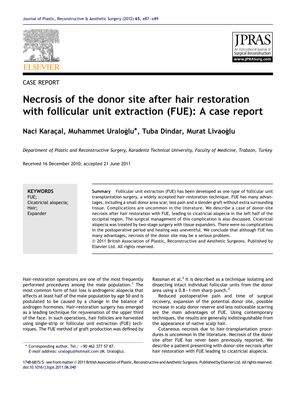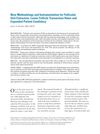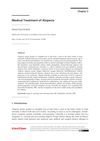Necrosis of the Donor Site After Hair Restoration With Follicular Unit Extraction: A Case Report
July 2011
in “
Journal of Plastic Reconstructive and Aesthetic Surgery
”
follicular unit extraction FUE necrosis cicatricial alopecia Norwood class III androgenic alopecia 0.8-mm punches debridement secondary healing tissue expanders vasoconstrictor agents ischemia hair restoration hair transplant donor site necrosis scar tissue hair loss hair thinning punches wound cleaning healing skin expanders blood flow restriction

TLDR A patient had skin tissue death at the hair removal site after a hair transplant, which was treated with surgery.
In the 2012 case report, a 22-year-old male patient experienced necrosis of the donor site following a follicular unit extraction (FUE) hair restoration procedure, which led to cicatricial alopecia in the left occipital region. The patient had a family history of early hair loss and was diagnosed with Norwood class III androgenic alopecia. During the procedure, 950 follicles were removed using 0.8-mm punches, and postoperatively, an area of 6 × 8 cm of necrotic tissue developed around the extraction sites. The necrosis was treated by debridement and secondary healing, followed by a two-stage surgical intervention with tissue expanders to address the resulting cicatricial alopecia. The patient recovered without further complications. The report suggests that while FUE has many advantages, such as less pain and scarring, the risk of donor site necrosis is a serious potential complication. The authors emphasize the importance of using suitable concentrations of vasoconstrictor agents and monitoring for ischemia in the donor area during and after the procedure.




